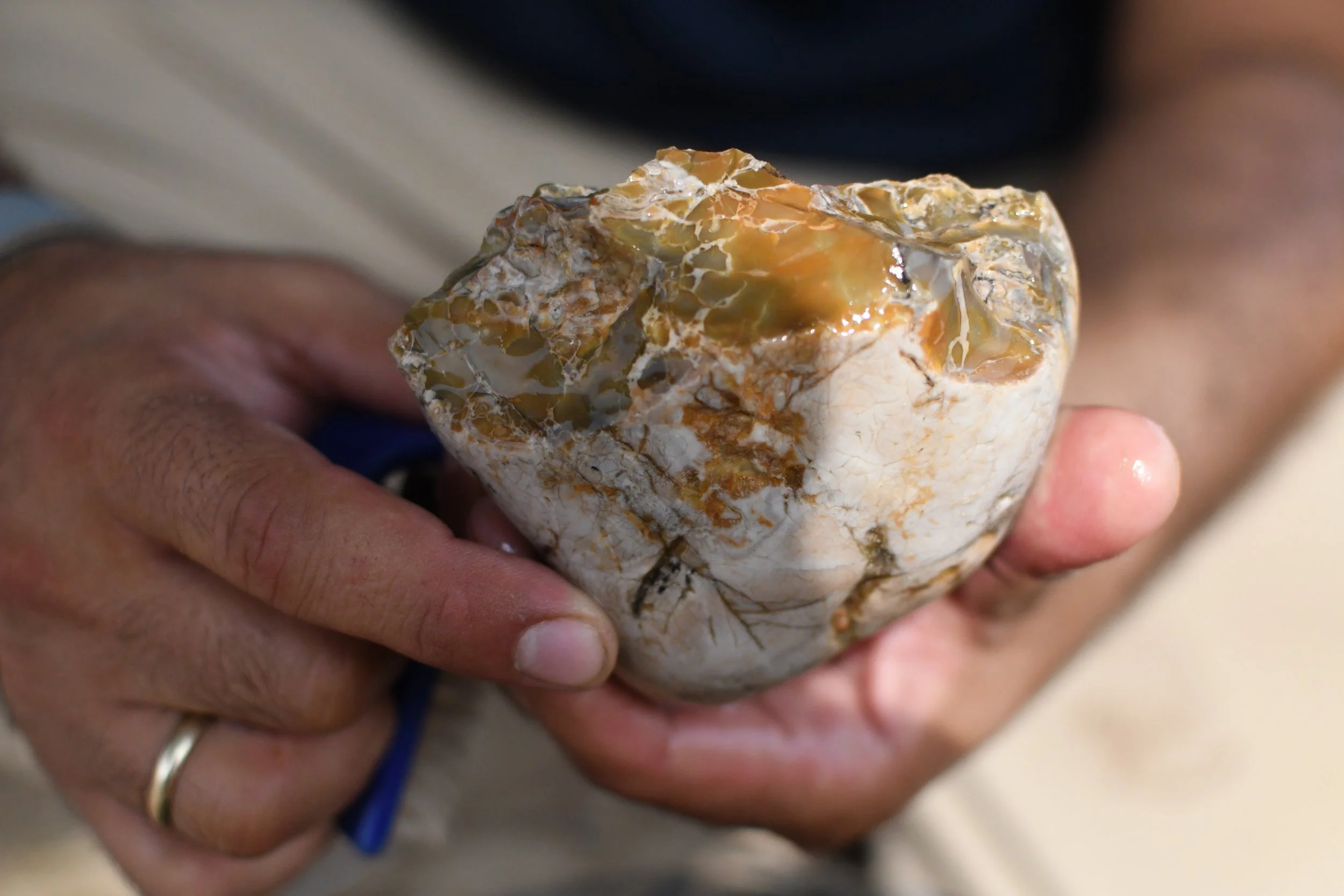The discovery of a complete tusk of a straight-tusked elephant (Palaeoloxodon antiquus) near Kibbutz Revadim in southern Israel sheds new light on the fascinating life of prehistoric humanity. Archaeologists, paleontologists, and conservators from the Israel Antiquities Authority, Tel Aviv University, and Ben Gurion University uncovered the 2.5-meter-long ancient tusk. It is not an illusion, as gigantic elephants roamed and grazed the prehistoric landscape of the coastal plain of Israel half a million years ago, as attested by this exceptionally well-preserved ancient elephant tusk.
At the end of an intensive two-week excavation named "Operation Elephant," specialists from the Israel Antiquities Authority, the Dan David Center for Human Evolution and Biohistory at Tel Aviv University, and Ben-Gurion University of the Negev, have exposed the ancient elephant tusk that was concealed in the ground for hundreds of thousands of years.
Dr. Eitan Mor, a biologist from Jerusalem, was the first to discover the fossil. He visited the area out of curiosity after reading about prehistoric elephants. Mor says, "To my surprise, I spotted something that looked like a large animal bone peeping out of the ground. When I looked closer, I realized it was 'the real thing,' so I rushed to report it to the Israel Antiquities Authority".
The Israel Antiquities Authority archaeologists arrived at the site following Mor's report and could hardly believe their eyes. "From our previous archaeological excavations at Revadim, we knew that the site was settled in the Late Lower Paleolithic period, as stone and flint tools, as well as animal bone, remains (including elephants) were retrieved but finding this half a million-year-old complete elephant tusk in such a good condition is something else! This is the largest complete fossil tusk ever found at a prehistoric site in Israel or the Near East," says Israel Antiquities Authority prehistorian Avi Levy, the excavation director.
Extracting the large tusk from the site sediments is a great challenge, even for experienced archaeologists and conservators. "The fossilized tusk is extremely fragile, and it is likely to disintegrate when exposed to the air and sunlight and human touch," explains Prof. Israel Hershkovitz from the Dan David Center for Human Evolution and Biohistory at Tel Aviv University. "The tusk was subjected to an initial conservation treatment when it was first discovered. We are excavating it within its archaeological context before transferring it to the Israel Antiquities Authority Conservation Laboratory, where it will be studied and conserved."
Elephants roamed our region a million and a half years ago, living alongside other large mammals, such as wild cattle, hippopotami, deer, wild boars, and wild horses. However, finding elephant remains at archaeological sites is uncommon, and this discovery is of great scientific interest. "The tusk belongs to the straight-tusked elephant species, known from only a few sites. The species appeared in our region about 800,000 years ago, and 400,000 years ago, it became extinct. It was a gigantic elephant, larger than the present-day African elephant," points out Israel Antiquities Authority Archaeo-zoologist Dr. Lee Perry-Gal.
"In the archaeological excavations that we conducted here several years ago, we found some elephant bones (skull parts, ribs, and teeth), and flint artifacts, such as flake tools, hand-axes, and chopping tools used in processing animal flesh," report Prof. Ofer Marder of Ben-Gurion University and Dr. Ianir Milevski, head of the Israel Antiquities Authority Prehistory Branch. "The discovery of the tusk, detached from the skull and the rest of the body, raises questions – Is the tusk the remains of a hunted elephant, or was it collected by the local prehistoric inhabitants? Did the tusk have social or spiritual significance?"
Ethnographic studies reveal that a large group of people carried out elephant hunting. "The concentration of the material remains—mostly stone tools— in the current excavation and at the entire site indicates that there was a substantial number of people at the site in one period of time and that elephants were hunted. In the hot, dry climate in our region, elephant's meat could not stay fresh for long, so it must have been consumed quickly by many people, probably as part of a communal event," said Prof. Israel Hershkovitz from the Dan David Center at Tel Aviv University, and Dr. Omry Barzilai from the Israel Antiquities Authority. There is an ongoing academic debate about the role of elephants in the Lower Paleolithic period – were they routinely hunted as a central component in the human diet, or were they hunted only on special occasions of social significance? We anticipate that the discovery of the new tusk in a clear archaeological context will shed light on this issue."
The new joint project of the Israel Antiquities Authority, Tel Aviv University, and Ben Gurion University is expected to answer critical questions regarding the life of prehistoric elephant hunters and their social behavior in a fascinating period of human history that reflects the establishment of humans at the top of the food chain.
According to the Director of the Israel Antiquities Authority, Mr. Eli Escusido, "The elephant tusk is an archaeological find of primary importance for the academic community and public interest. Consequently, once the conservation process is completed, we plan to exhibit the tusk to the public in our permanent exhibition hall at the new Jay and Jeanie Schottenstein National Campus for the Archaeology of Israel in Jerusalem.

